Enrichment of SARM1 alleles encoding variants with constitutively hyperactive NADase in patients with ALS and other motor nerve disorders
- PMID: 34796871
- PMCID: PMC8735862
- DOI: 10.7554/eLife.70905
Enrichment of SARM1 alleles encoding variants with constitutively hyperactive NADase in patients with ALS and other motor nerve disorders
Abstract
SARM1, a protein with critical NADase activity, is a central executioner in a conserved programme of axon degeneration. We report seven rare missense or in-frame microdeletion human SARM1 variant alleles in patients with amyotrophic lateral sclerosis (ALS) or other motor nerve disorders that alter the SARM1 auto-inhibitory ARM domain and constitutively hyperactivate SARM1 NADase activity. The constitutive NADase activity of these seven variants is similar to that of SARM1 lacking the entire ARM domain and greatly exceeds the activity of wild-type SARM1, even in the presence of nicotinamide mononucleotide (NMN), its physiological activator. This rise in constitutive activity alone is enough to promote neuronal degeneration in response to otherwise non-harmful, mild stress. Importantly, these strong gain-of-function alleles are completely patient-specific in the cohorts studied and show a highly significant association with disease at the single gene level. These findings of disease-associated coding variants that alter SARM1 function build on previously reported genome-wide significant association with ALS for a neighbouring, more common SARM1 intragenic single nucleotide polymorphism (SNP) to support a contributory role of SARM1 in these disorders. A broad phenotypic heterogeneity and variable age-of-onset of disease among patients with these alleles also raises intriguing questions about the pathogenic mechanism of hyperactive SARM1 variants.
Keywords: ALS; NADase; SARM1; genetics; genomics; human; neuroscience; risk allele.
© 2021, Gilley et al.
Conflict of interest statement
JG Part-funded by AstraZeneca during the past 3 years, OJ Currently part-funded by AstraZeneca, MP, ME, AA, MD, Kv, SG, MH, HH, AI, JK, LL, JR, GR, RS, JX, SZ, JC, ZG, MR No competing interests declared, MC Consults for Nura Bio, but no support provided for this work
Figures





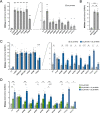

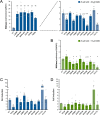
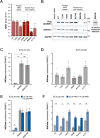
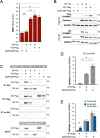
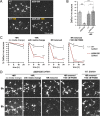


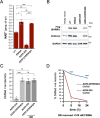

References
-
- Angeletti C, Amici A, Gilley J, Loreto A, Trapanotto AG, Antoniou C, Coleman MP, Orsomando G. Programmed Axon Death Executor SARM1 Is a Multi-Functional NAD(P)Ase with Prominent Base Exchange Activity, All Regulated by Physiological Levels of NMN, NAD, NADP and Other Metabolites. bioRxiv. 2021 doi: 10.1101/2021.07.14.451805. - DOI - PMC - PubMed
-
- Arai T, Hasegawa M, Akiyama H, Ikeda K, Nonaka T, Mori H, Mann D, Tsuchiya K, Yoshida M, Hashizume Y, Oda T. TDP-43 is a component of ubiquitin-positive tau-negative inclusions in frontotemporal lobar degeneration and amyotrophic lateral sclerosis. Biochemical and Biophysical Research Communications. 2006;351:602–611. doi: 10.1016/j.bbrc.2006.10.093. - DOI - PubMed
-
- Bosanac T, Hughes RO, Engber T, Devraj R, Brearley A, Danker K, Young K, Kopatz J, Hermann M, Berthemy A, Boyce S, Bentley J, Krauss R. Pharmacological SARM1 inhibition protects axon structure and function in paclitaxel-induced peripheral neuropathy. Brain: A Journal of Neurology. 2021;8:awab184. doi: 10.1093/brain/awab184. - DOI - PMC - PubMed
-
- Bratkowski M, Xie T, Thayer DA, Lad S, Mathur P, Yang YS, Danko G, Burdett TC, Danao J, Cantor A, Kozak JA, Brown SP, Bai X, Sambashivan S. Structural and Mechanistic Regulation of the Pro-degenerative NAD Hydrolase SARM1. Cell Reports. 2020;32:107999. doi: 10.1016/j.celrep.2020.107999. - DOI - PubMed
Publication types
MeSH terms
Substances
Grants and funding
- 220906/Z/20/Z/WT_/Wellcome Trust/United Kingdom
- MR/L501529/1/MRC_/Medical Research Council/United Kingdom
- U54 NS065712/NS/NINDS NIH HHS/United States
- U54NS065712/National Institutes of Neurological Diseases and Stroke and office of Rare Diseases
- BB/S009582/1/BB_/Biotechnology and Biological Sciences Research Council/United Kingdom
- R01 NS072248/NS/NINDS NIH HHS/United States
- K23 ES027221/ES/NIEHS NIH HHS/United States
- 216596/Z/19/Z/WT_/Wellcome Trust/United Kingdom
- MR/R024804/1/MRC_/Medical Research Council/United Kingdom
- MR/N004582/1/MRC_/Medical Research Council/United Kingdom
- WT_/Wellcome Trust/United Kingdom
- R01 NS105755/NS/NINDS NIH HHS/United States
LinkOut - more resources
Full Text Sources
Other Literature Sources
Medical
Miscellaneous

